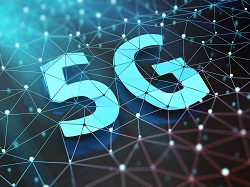5G network test in Spain: A step closer to inexpensive internet
With the power of new technologies to accelerate human progress, bridging the digital divide where billions of people are still offline is more important than ever. To achieve digital equality for socioeconomic growth, the global community, from governments to non-state actors, has been working on offering affordable, universal internet access around the world. This is also crucial at a time when 5G technology heralds the beginning of a higher form of internet connectivity with more enhanced features. Yet, connectivity costs remain a major obstacle to achieving the universal access pledge. To address this challenge, an international team of researchers implemented a live consumer-facing trial of a 5G network architecture in Spain’s Tarragona community. This was done through the EU-funded RIFE project. Summarising their attempt in a recent press release, the researchers said the test was geared towards affordability and access. As they point out, the trial features “InterDigital’s software-based Flexible IP-based Services platform and community-supported hardware through guifi.net in Catalonia, Spain, the world’s largest community network with 40 000+ nodes.” Cost reduction and increase in bandwidth utilisation A community network is defined as a computer-based system that is intended to help geographical communities by supporting, augmenting and extending already existing social networks. Nodes are devices – such as personal computers and mobile phones – on a larger data structure or network. According to its members, guifi.net, which took part in RIFE, is “a bottom-up, citizen-driven technological, social and economic project with the objective of creating a free, open and neutral telecommunications network.” The press release explains that implementation of the network architecture will drive cost reduction, increases in bandwidth utilisation in the fronthaul network and towards the peering links – typically the expensive part in a community network – and the ability to easily host community services. “The Tarragona deployment is a pure software installation, seeking to radically optimise existing infrastructure.” The term ‘fronthaul’ is used to describe the connection between the cell tower radio itself and the mobile network control backbone. ‘Backhaul’ refers to the linkage between a base station and the core wired network. Quoted in the press release, Dirk Trossen, senior principal engineer at InterDigital, one of the participants in RIFE, said the trial highlights another facet of 5G and added that it’s not “just all about bandwidth improvement.” He emphasised that it was also “a focus on the societal challenge of bringing affordable internet to more people.” To make the internet available to those who have been left out so far and make it sustainable at a reasonable cost, RIFE (architectuRe for an Internet For Everybody) focused on increasing the efficiency of the underlying transport networks and the involved architectures and protocols. The ultimate goal is to evaluate the commercial viability of the RIFE platform in order to provide the basis for a sustainable value chain. As the researchers explain on the RIFE website, they hope to develop business opportunities for local authorities and backhaul network providers. This will be done by introducing virtual network operators that utilise the under-used capacity in a new business relationship with local customers, enabling novel and often socially driven business models. For more information, please see: project website
Countries
Switzerland



